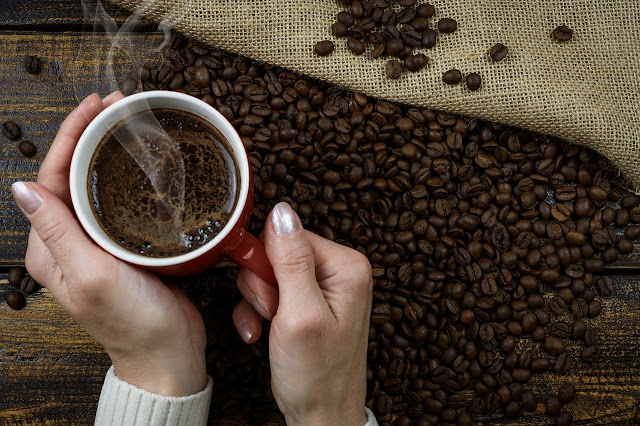Making Sense of Coffee Pricing
Much like chocolate, alcohol, and all the other best things in life, coffee can be found at every possible price point and quality level. From $2 instant grocery store coffee to the infamous $500 Kopi Luwak, the coffee produced thanks to the Asian palm civet’s digestive system, it can be hard to believe that one plant can create such vast differences in taste and class. Perhaps the most important question that arises out of this observation is where the factors of delicious taste and reasonable price meet each other in the middle—in other words, how much should you really be paying for the perfect bag of beans? Is the harsh reality of a quality cup of coffee the fact that you have to shell out hundreds of dollars per pound to attain it?
First, an understanding of how and why coffee is priced is necessary. While the aforementioned Kopi Luwak is an outlier, with prices driven up due to name recognition, shock value, and tourism rather than taste (in fact, the Specialty Coffee Association says,”…it tastes bad, it’s expensive, and [it] may not be the nicest experience for the animals that produce it.”), there are still plenty of varieties that sit at initially shocking price points. There are a monumental number of factors that influence the end price of a bag of coffee. To explore this, let’s look at two regions that produce some of the most expensive beans- Hawaii and Yemen.
With 12oz of Yemeni coffee costing upwards of $150, it is certainly on the high end of the scale. While it produces a wonderful cup full of fruity tasting notes, this is not necessarily the reason for the price. Yemeni coffee racks up costs due to the scarcity of it comparatively due to the country’s conditions, as well as the extra steps all of the middlemen involved in the coffee chain of supply must go through. Working with small lots, high waste, and water scarcity, Yemeni coffee farmers run into many difficulties unique to them. While coffee farming in any part of the world is often high risk and low reward, Yemen faces extra problems due to geopolitical conflict causing transport issues. High fuel prices and an abundance of travel checkpoints that often come with a cost mean overall production prices soar, and in turn, so do the prices that end-users face.
Hawaiian Kona is a well-known name in coffee, and one that is often misleading. While you may find a 16oz bag of “Kona Blend” on the shelves of your local grocery store for the lovely price of $12, these blends are typically only about 10% true Kona coffee, with the rest being a mix of lesser-quality beans. A true bag of Hawaiian Kona will set you back around $80 to $100. As it is grown in the United States, the price is not due to shipping costs or waste, but rather due to rarity and labor costs. The volcanic soil and mild weather create the perfect growing condition for a rich, pure coffee, which is handpicked year-round. As costs of labor are higher in the United States than in the leading coffee providing countries, it automatically bumps the price of the end product.
On the flip side of things, what makes those tins of conveniently pre-ground coffee so cheap? Choosing one of these varieties means sacrificing the knowledge of what is going into your cup, freshness and taste, and certifications such as organic or fair trade. While these coffees are inexpensive and easy to brew a fast cup with, at the end of the day they are blends of low-quality beans that result in a low-quality brew. There is no transparency in the majority of these brands as to where they source their coffee, meaning not only do you lose important information like tasting notes and brewing recommendations that can be influenced by region, but also the knowledge that your coffee is produced ethically. A smaller roaster is much more likely to provide coffees with important certifications such as organic or fair trade, and many foster direct relationships with their farmers, meaning honesty with consumers about their product. Pre-ground coffees also lose a large amount of flavor due to their inability to retain freshness.
Like any product, there is a perfectly acceptable middle ground. A satisfying cup of coffee is not dependent on purchasing the most expensive beans you can find. In fact, you won’t find yourself spending a great deal more on high-quality coffees from roasters than you would on instant coffees—the difference in price is often just a few dollars, while the difference in quality is astounding. Most coffees from reputable roasters fall between $12-$20 per pound. But what sets these apart from their less expensive counterparts?
There is an astounding variety of coffee at this price point. Whether you prefer Latin American or African origins, light or dark roast, fruity or floral notes, there is something for you out there for a more than reasonable cost. Roasters like Fortuna are conscious of the origins of their beans and knowledgeable on their tastes, qualities, and how they should be brewed. The whole bean coffee you receive from roasters is much fresher and more flavorful, and you will know exactly what you are drinking, rather than an amalgamation of mystery beans.
In short, there is no need to spend hundreds on a pound of coffee to receive something of quality. While high-end coffees are wonderful and typically deserving of their price point due to scarcity and work put into producing the cup you end up enjoying, they aren’t a necessity to your average coffee consumer. You are more than able to find a quality coffee that you love at a price point that is comfortable to you!


